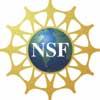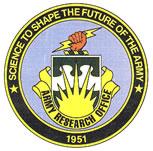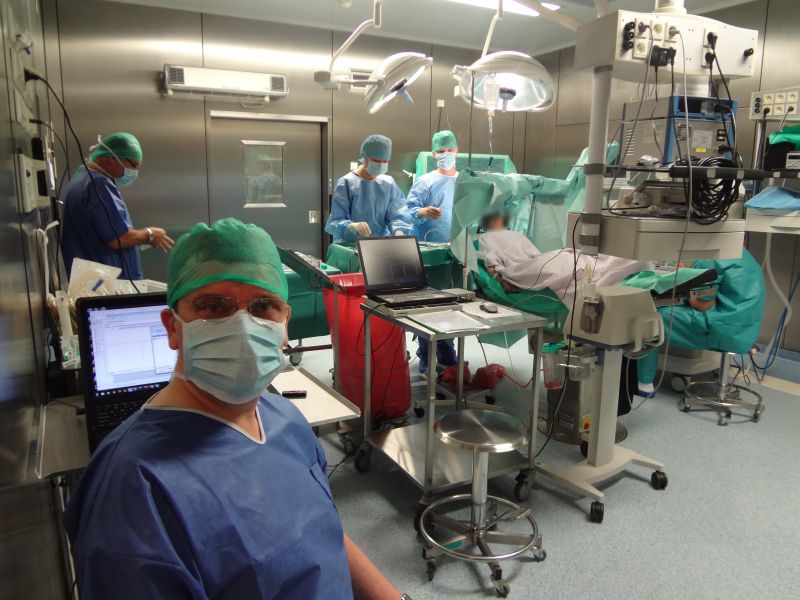Projects
Projects in the Laboratory are (or have been) Sponsored by:










SAMPLE PROJECTS:
1. Decision Support System for Intra Surgical Localization of Subthalamic Nucleus in Parkinson Patients

During deep brain stimulation (DBS) treatment of Parkinson disease, the target of the surgery is the subthalamic nucleus (STN). This anatomical structure is small (9 × 7 × 4 mm) and poorly visible using Computer Tomography (CT) or Magnetic Resonance Imaging (MRI) scans. A multi-electrode micro recording system is used intra surgically for better localization of this target nucleus. My PhD student, Konrad Ciecierski, built decision support system to help neurosurgeons in precise localization of STN. The work was done in collaboration with Dr. A. Przybyszewski from the Dept. of Neurology, UMass Medical School and two internationally recognized neurosurgeons from the Medical School in Warsaw, Poland. The system was successfully tested in one of the hospitals in Warsaw (Poland) during 30+ Parkinson surgeries.
Our Decision Support System used during Parkinson Surgery
SAMPLE PUBLICATIONS:
“Foundations of automatic system for intrasurgical localization of Subthalamic Nucleus in Parkinson patients”, K. Ciecierski, Z.W. Ras, A. Przybyszewski, in Web Intelligence and Agent Systems, International Journal, IOS Press, Vol. 12, No. 1, 2014, 63-82
“Computer Aided Subthalamic Nucleus (STN) Localization during Deep Brain Stimulation (DBS) Surgery in Parkinson’s Patients”, Ciecierski, K., Mandat, T., Rola, R., Ras, Z.W., Przybyszewski, A.W., Annales Academiae Medicae Silesiensis, Vol. 68, No. 5, 2014, 275-283
“Spike Sorting based upon PCA over DWT Frequency Band Selection”, Ciecierski, A., Ras, Z.W., Przybyszewski, A., Proceedings of ISMIS 2014 in Roskilde, Denmark, LNAI, Vol. 8502, Springer, 2014, 154-163
“Intraoperative Decision Making with Rough Set Rules for STN DBS in Parkinson Disease”, Ciecierski, K., Ras, Z.W., Przybyszewski, A.W., Proceedings of the International Conference on Brain Informatics and Health, in Warsaw, Poland, LNCS, Vol. 8609, Springer, 2014, 323-334
“Discrimination of the micro electrode recordings for STN localization during DBS surgery in Parkinson’s patients”, K. Ciecierski, Z.W. Ras, A. Przybyszewski, Proceedings of FQAS 2013 in Granada, Spain, LNAI, Vol. 8132, Springer, 2013, 328-339
“Foundations of recommender system for STN localization during DBS surgery in Parkinson’s patients”, K. Ciecierski, Z.W. Ras, A. Przybyszewski, in Foundations of Intelligent Systems, Proceedings of ISMIS 2012 Symposium, LNAI, Vol. 7661, Springer, 2012, 234-243
“Selection of the optimal electrode in Parkinson’s disease DBS treatment”, K. Ciecierski, Z.W. Ras, A. Przybyszewski, in Foundations of Intelligent Systems, Proceedings of ISMIS 2011 Symposium, LNAI, Vol. 6804, Springer, 2011, 554-564
2. MIRAI – System for Automatic Indexing of Polyphonic Music.

Hierarchically structured cascade classifiers are used in the system called MIRAI to estimate multiple timbre information from the polyphonic sound – classification is based on acoustic features and short-term power spectrum matching. MIRAI system makes a first estimate on the higher level decision attribute which stands for the musical instrument family. Then, the further estimation is done within that specific family range. Experiments showed better performance of a hierarchical system than the traditional flat classification method which directly estimates the instrument without higher level of family information analysis. Traditional hierarchical structures (Hornbostel Sachs, Play Methods) are constructed in human semantics, which is meaningful from human perspective but not appropriate for a cascade system. We introduced a new hierarchical instrument schema according to the clustering results of the acoustic features. This new schema better describes the similarity among different instruments or among different playing techniques of the same instrument. The classification results show the higher accuracy of cascade system with the new schema compared to the traditional schemas. Project was sponsored by two NSF Grants: IIS-0414815, IIS-0968647
PPT Presentation.

System MIRAI for Automatic Indexing of Music by Hierarchically Structured Cascade Classifiers
SAMPLE PUBLICATIONS:
Advances in Music Information Retrieval, Z.W. Ras, A. Wieczorkowska (editors), Studies in Computational Intelligence, Vol. 274, Springer, 2010, 420 pages
“From Personalized to Hierarchically Structured Classifiers for Retrieving Music by Mood”, Mostafavi, A., Ras, Z.W., Wieczorkowska, A., in “New Frontiers in Mining Complex Patterns”, Post-proceedings of NFMCP 2013, ECML/PKDD Workshop, Prague, Czech Republic, LNAI, Vol. 8399, Springer, 2014, 231-245
“Multi-Label Automatic Indexing of Music by Cascade Classifiers”, W. Jiang, Z.W. Ras, in Web Intelligence and Agent Systems, International Journal, IOS Press, Vol. 11, No. 2, 2013, 149-170
“Recognition of instrument timbres in real polytimbral audio recordings”, E. Kubera, A. Wieczorkowska, Z.W. Ras, M. Skrzypiec, in Proceedings of 2010 ECML/PKDD Conference, LNCS, Springer, 2010, 97-110
“Clustering Driven Cascade Classifiers for Multi-Indexing of Polyphonic Music by Instruments”, W. Jiang, Z.W. Ras, A. Wieczorkowska, in Advances in Music Information Retrieval, Studies in Computational Intelligence, Vol. 274, Springer, 2010, 19-38
“Music Instrument Estimation in Polyphonic Sound Based on Short-Term Spectrum Match”, W. Jiang, A. Wieczorkowska, Z.W. Ras, in “Foundations of Computational Intelligence Volume 2”, A.-E. Hassanien et al (Eds.), Studies in Computational Intelligence, Vol. 202, Springer, 2009, 259-273
3. Hierarchically Structured Recommender System for Improving the Efficiency of a Company’s Growth Engine
It is built from knowledge extracted from very large datasets (NPS datasets) containing answers to a set of queries (called questionnaire) sent to a randomly chosen groups of customers. The purpose of the questionnaire is to check customer satisfaction in using services of these companies which have repair shops all involved in a similar type of business (in our project – fixing heavy equipment). These shops are located in 29 states in the US and Canada. Some of the companies have their shops located in more than one state. They can compete with each other only if they target the same group of customers. The performance of a company is evaluated using Net Promoter System (NPS). For that purpose, the data from the completed questionnaires are stored in NPS datasets. We have 34 such datasets, one for each company. Knowledge extracted from them, especially action rules and their triggers, can be used to build recommender systems giving hints to companies how to improve their NPS ratings. We introduced the concept of semantic similarity between companies. More semantically similar the companies are, the knowledge extracted from their joined NPS datasets has higher accuracy and coverage. Our hierarchically structured recommender system is a collection of recommender systems organized as a tree. Lower the nodes in the tree, more specialized the recommender systems are and the same the classifiers, action rules, and their triggers used to build their recommendation engines have higher precision and accuracy.
PPT Presentation, POSTER.


SAMPLE PUBLICATIONS:
“In Search for Best Meta-Actions to Boost Businesses Revenue”, Kuang, J., Ras, Z.W., in Proceedings of the Conference on Flexible Query Answering Systems 2015, in Krakow, Poland, Advances in Intelligent Systems and Computing, Vol. 400, Springer, 2015, 431-443
“Personalized Meta-Action Mining for NPS Improvement”, Kuang, J., Ras, Z.W., Daniel, A., in Foundations of Intelligent Systems, Proceedings of ISMIS 2015 in Lyon, France, LNAI, Vol. 9384, Springer, 2015, 73-80
“Hierarchical Agglomerative Method for Improving NPS”, Kuang, J., Ras, Z.W., Daniel, A., in Proceedings of the International Conference on Pattern Recognition and Machine Intelligence, LNCS, Vol. 9124, Springer, 2015, 54-64
“Recommender System for Improving Customer Loyalty”, Tarnowska, K., Ras, Z.W., Daniel, L., Studies in Big Data, Vol. 55, Springer, 2020
“Sentiment Analysis of Customer Data”, K. Tarnowska, Z.W. Ras, in Web Intelligence Journal, Vol. 17, Issue 4, IOS Press, 2019, 343-363
“From Knowledge Discovery to Customer Attrition”, K. Tarnowska, Z.W. Ras, in “Foundations of Intelligent Systems, Proceedings of ISMIS 2018”, M. Ceci, et al. (Eds), LNAI, Vol. 11177, Springer, 2018, 417-425
“Visual Analysis of Relevant Features in Customer Loyalty Improvement Recommendation”, K. Tarnowska, Z.W. Ras, L. Daniel, D. Fowler, in Advances in Feature Selection for Data and Pattern Recognition, Intelligent Systems Reference Library, Vol. 138, Springer, 2017, 269-293
“User Friendly NPS-based Recommender System for driving Business Revenue”, Z.W. Ras, K. Tarnowska, J. Kuang, L. Daniel, D. Fowler, in Proceedings of 2017 International Joint Conference on Rough Sets (IJCRS’17), LNCS, Vol. 10313, Springer, 2017, 34-48